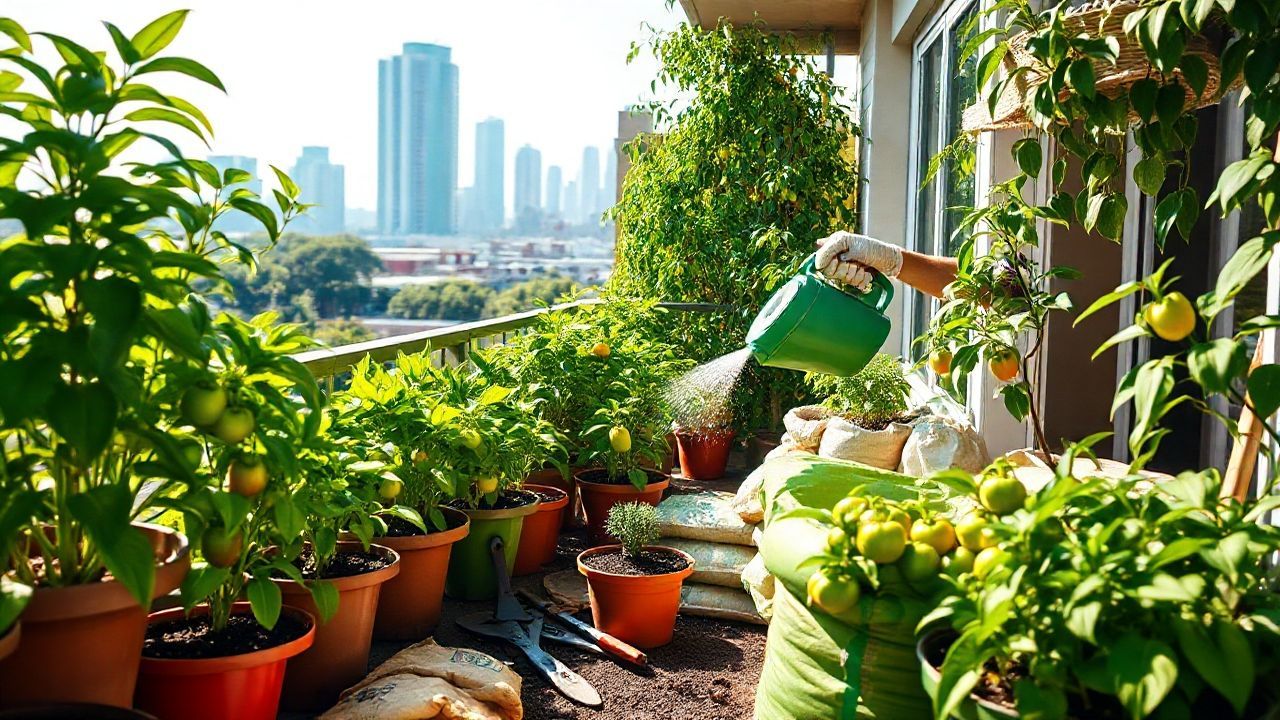Introduction to growing peppers in pots
Growing bell peppers in pots offers a convenient and space-saving way to cultivate these flavorful vegetables. Whether you have a limited garden space or prefer to grow them on a balcony or patio, containers provide an ideal solution. With proper soil, sunlight, watering, and fertilization, you can enjoy homegrown bell peppers with minimal effort.
To begin, select a pot that is at least 12 inches in diameter and 12 inches deep. The pot should have drainage holes to prevent waterlogging, which can lead to root rot. Fill the pot with a well-draining potting mix specifically designed for containers. Bell peppers thrive in slightly acidic soil with a pH between 6.0 and 6.5.
Consider the variety of bell pepper you want to grow. Some varieties are compact and suitable for small pots, while others require more space. Choose a sunny location where the pots will receive at least 6 hours of sunlight per day. Peppers need warmth to produce fruit, so make sure the pots are protected from cold temperatures.
Water bell peppers deeply and regularly, especially during hot and dry weather. Avoid overwatering, as this can lead to fungal diseases. Fertilize the peppers every few weeks with a balanced fertilizer. Provide support for the plants as they grow taller. Use stakes or cages to prevent the branches from breaking under the weight of the fruit.
Choosing the right pots and soil
The type of pot and soil you choose for growing bell peppers in pots will greatly impact their health and productivity. Here are some key considerations:
Pot Size and Material:
Select a pot that is at least 12-18 inches wide and 12 inches deep to provide ample root space.
Choose a durable material like glazed ceramic, terracotta, or plastic that offers good drainage.
Ensure the pot has drainage holes at the bottom to prevent waterlogging.
Soil:
Bell peppers prefer well-drained, loamy soil rich in organic matter.
Use a potting mix specifically formulated for vegetables or create your own by mixing equal parts peat moss, compost, and vermiculite or perlite.
Amend the soil with a slow-release fertilizer to provide essential nutrients.
The pH level should be between 6.0 and 6.8.
Other Considerations:
Drainage: Ensure the pot has sufficient drainage holes to prevent the soil from becoming waterlogged.
Weight: Consider the weight of the pot and soil when filled with water. Large pots can be heavy and difficult to move.
Aesthetics: Choose a pot that complements your outdoor décor and matches the size and shape of the plant.
By selecting the right pots and soil, you can provide an optimal growing environment for your bell peppers, ensuring they thrive and produce abundant fruit throughout the season. Remember to monitor the soil moisture regularly and fertilize as needed to keep the plants healthy and productive.
Planting bell pepper seeds or seedlings
Whether you choose to sow seeds directly or transplant seedlings, the process is relatively straightforward.
For seed sowing, start indoors 8-10 weeks before the last frost. Sow seeds 1/4 inch deep in a seed starting mix and keep warm at 70-80°F. Seedlings should emerge in 10-14 days. Once they develop true leaves, thin them to the healthiest plants.
For transplanting, purchase healthy seedlings from a garden center or nursery. Choose plants that are compact and have deep green leaves. Dig holes in your containers that are twice the width of the root ball. Carefully remove the seedlings from their containers and gently loosen the roots. Place the seedlings in the holes and backfill with potting mix, firming the soil around the base. Water thoroughly.
Space the bell pepper plants according to the variety’s specific needs. Generally, compact varieties should be spaced 12-18 inches apart, while larger varieties require 24-36 inches of space. Ensure ample airflow between plants to prevent disease.
Caring for potted bell peppers
Harvesting bell peppers
The moment you’ve been eagerly awaiting has finally arrived: harvesting your homegrown bell peppers! As they ripen, bell peppers undergo a delightful transformation, their hues shifting from vibrant green to captivating shades of yellow, orange, and eventually, the classic ruby red that signifies their peak maturity.
To ensure the best flavor and texture, it’s crucial to harvest at the right time. Bell peppers are ready to be plucked when they feel firm and have developed their full color. Use sharp scissors or a clean knife to carefully cut the stem above the calyx (the leafy top).
Avoid pulling the peppers from the plant, as this can damage the vines and jeopardize future fruit production. Once harvested, store bell peppers in a cool, dry place, ideally in a paper bag or plastic container with holes for ventilation. They can typically be kept for up to two weeks under proper storage conditions.
Whether you’re enjoying them fresh, grilling them to smoky perfection, or adding them to your favorite recipes, savor the fruits of your labor and relish the sweet, crisp flavor of your homegrown bell peppers.

Leave a Reply